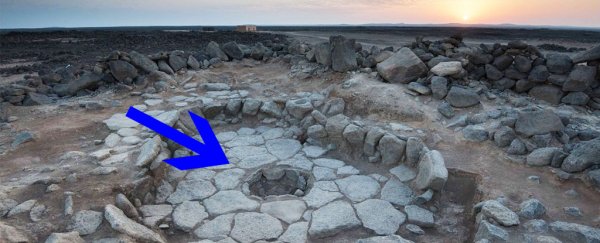Historians and archaeologists have traditionally linked bread to the dawn of agriculture, when people domesticated plants such as wheat, cultivated them and ground them into flour.
But a new discovery of blackened crumbs at an ancient stone building in the Middle East indicates that people were baking bread thousands of years earlier.
Based on the radiocarbon dates of charred plants in nearby fireplaces, the food scraps are about 14,400 years old.
That's about 4,000 years before agriculture emerged, according to a study published Monday in the Proceedings of the National Academy of Sciences.
"Our work shows that bread was not a product of settled, complex societies but a Paleolithic hunter-gatherer society," said study author Amaia Arranz Otaegui, a postdoctoral researcher at the University of Copenhagen.
Bread is an important food. Just look at a few of its many associations. We attach the word "bread" to the words "board," "basket," "crumb" and "winner."
Bread gave English speakers the word "lord," from the Old English word "hlafweard," which can be translated to "loaf-ward" (or, if you like, "keeper of the bread").
Despite its few ingredients - flour, water and dry heat - bread is very nutritious. The finer the plant matter, the easier it is to digest and absorb nutrients, said Dolores Piperno, a Smithsonian Institution archaeobotanist who was not affiliated with this research.
Some ground and baked foods such as bread have become carbohydrate villains in modern diet advice books, including "paleo" diets that claim to mimic what our ancestors ate. But hunter-gatherers would have welcomed bread's ability to boost blood sugar.
The people who built the ancient structure, members of what's called the Natufian culture, struggled in a "hostile environment to gain more energy from their food," said Ehud Weiss, an archaeobotanist at Bar-Ilan University in Israel who was not involved with the study.
Archaeologists found the bread remains in sediment samples at a site named Shubayqa 1 in Jordan. The structure was oval with a fireplace in the center, and its builders carefully laid stones into the ground.
Arranz Otaegui said she did not know whether the building was a dwelling or had other, perhaps ceremonial, purposes.
Sifting through the sediment, Arranz Otaegui noticed samples she couldn't place at first; they were not seeds, nuts or charred wood. Instead, they looked just like the crumbs that accumulate at the bottom of a toaster.
Study author and University College London graduate student Lara Gonzalez Carretero, using Natufian technology, has been experimentally re-creating the flour and dough. Pores in the samples mimicked the bubbles that appeared in the re-created bread.
"The main criteria on the identification of bread is its porous texture," Arranz Otaegui said. "If we take other foodstuffs like porridge or gruel, we will see pieces of grain but not all these micro-pores."
She said the closest common bread to these crumbs might be a pita, but she also said the Natufian bread was probably unleavened, like matzoh or tortillas.
Archaeologists knew that hunter-gatherers in this region could grind and bake food, according to Weiss. "The Shubayqa breadlike find is, however, the first of its kind," he said.
Cereal plants are high in calories. The traditional view was that early farmers domesticated those plants first, and then bakers began to turn cereals into bread.
Study author Dorian Fuller, a professor of archaeobotany at University College London, said the discovery made him question "whether domestication was really driven by caloric necessity," as has been claimed.
The Natufian people collected wild wheat and barley. An analysis of the starch in the crumbs revealed the presence of oats. But these ancient hunter-gatherers also ground a tuber called "club rush" into their bread.
The tubers are "quite gritty and salty," Arranz Otaegui said, but in experiments they were ground nicely into flour.
Piperno said that Arranz Otaegui and her colleagues were "justifiably cautious" in ascribing any sort of importance to this bread.
It was unclear to the study authors whether these breads were regularly eaten or occasional meals, or perhaps even luxury foods; other researchers have suggested that bread and beer were consumed during Natufian feasts.
2018 © The Washington Post
This article was originally published by The Washington Post.
